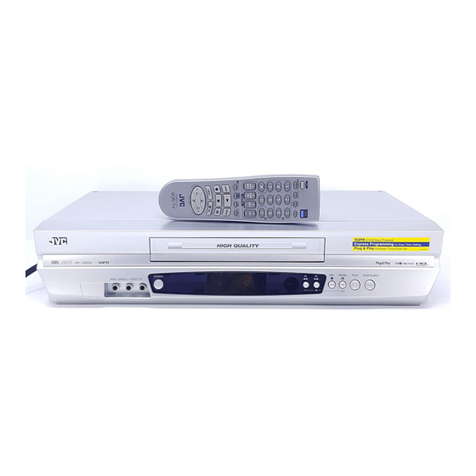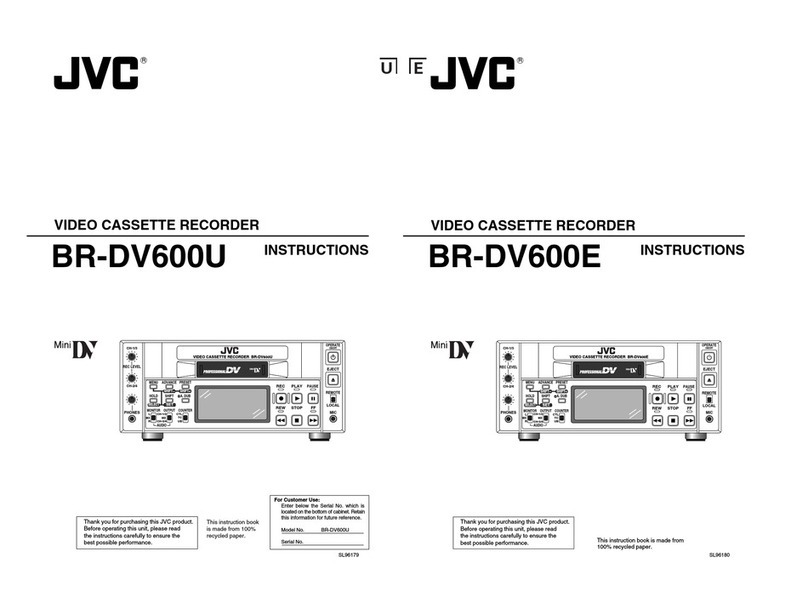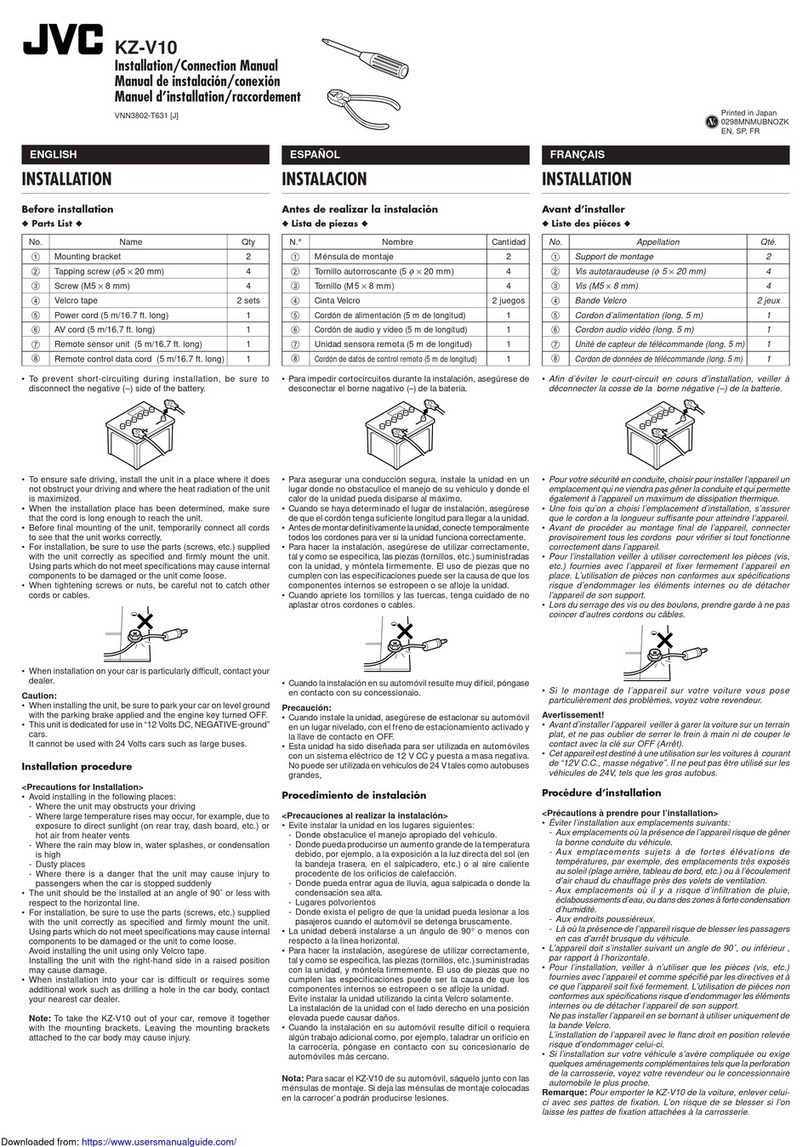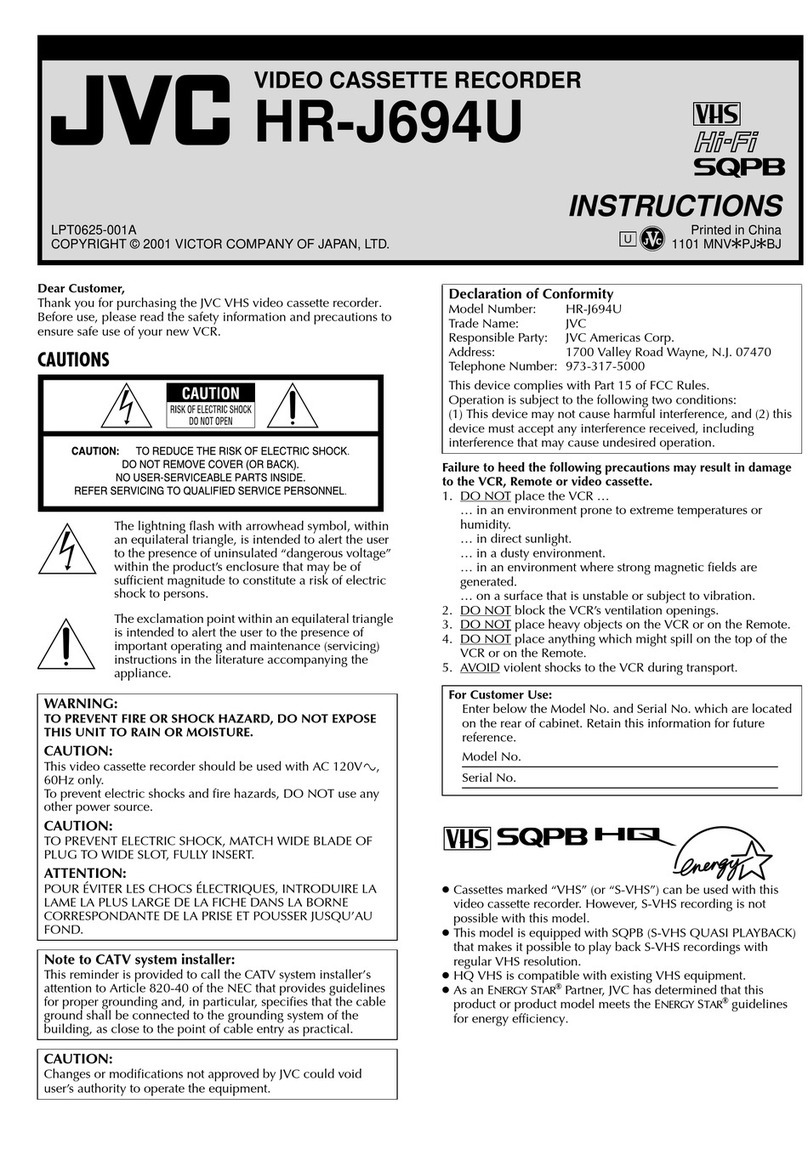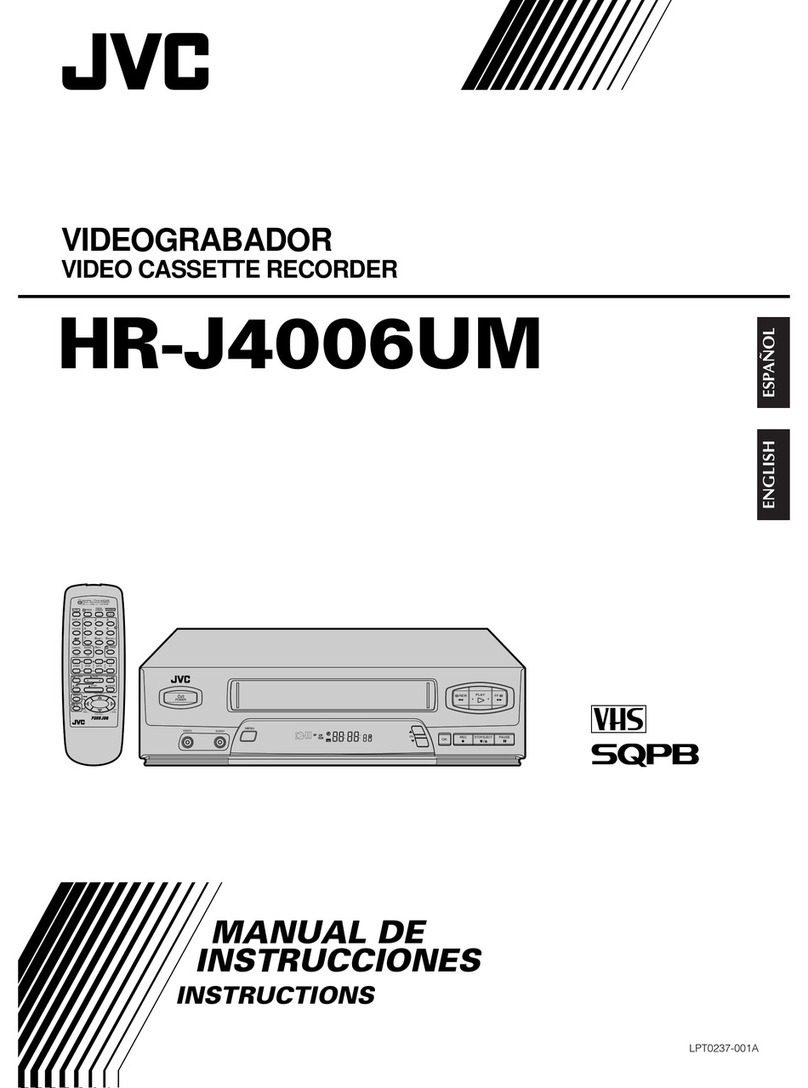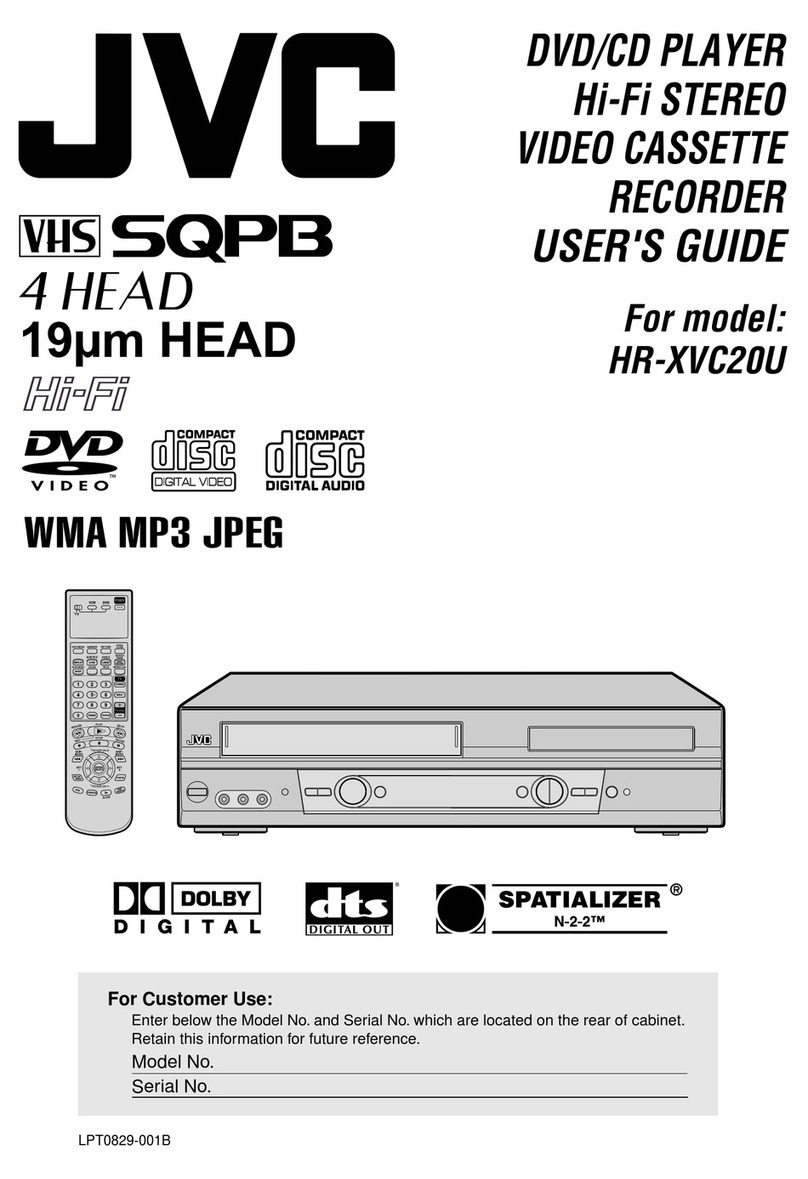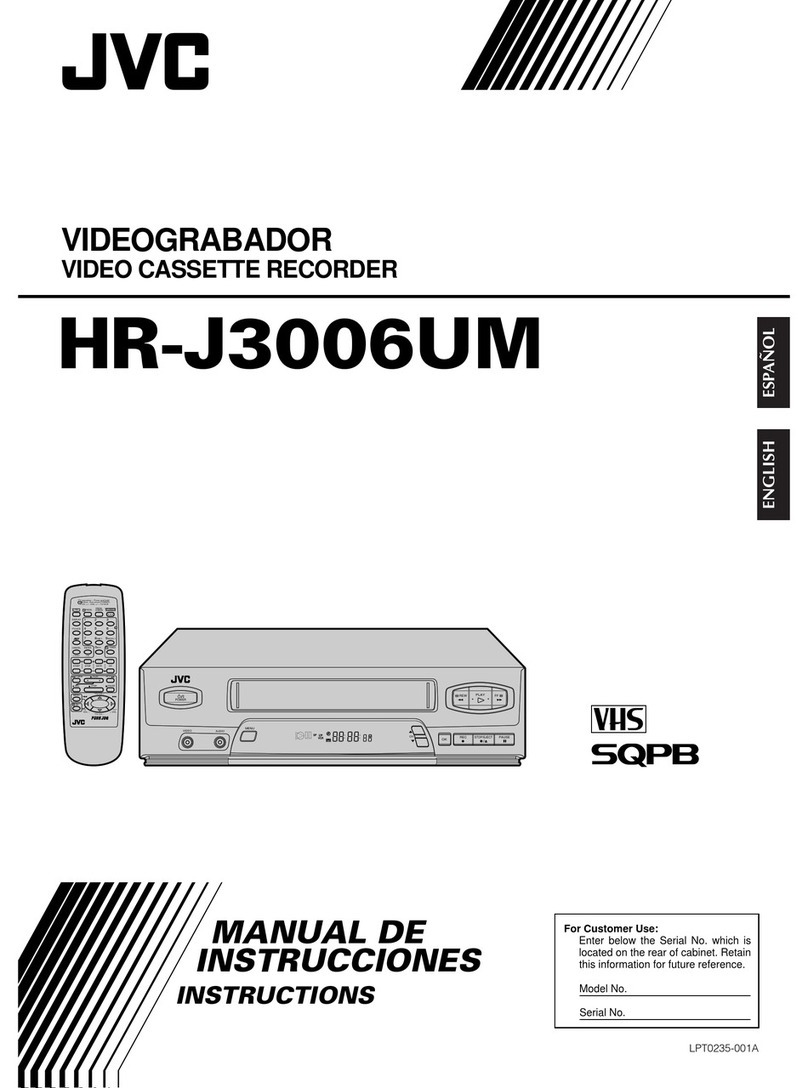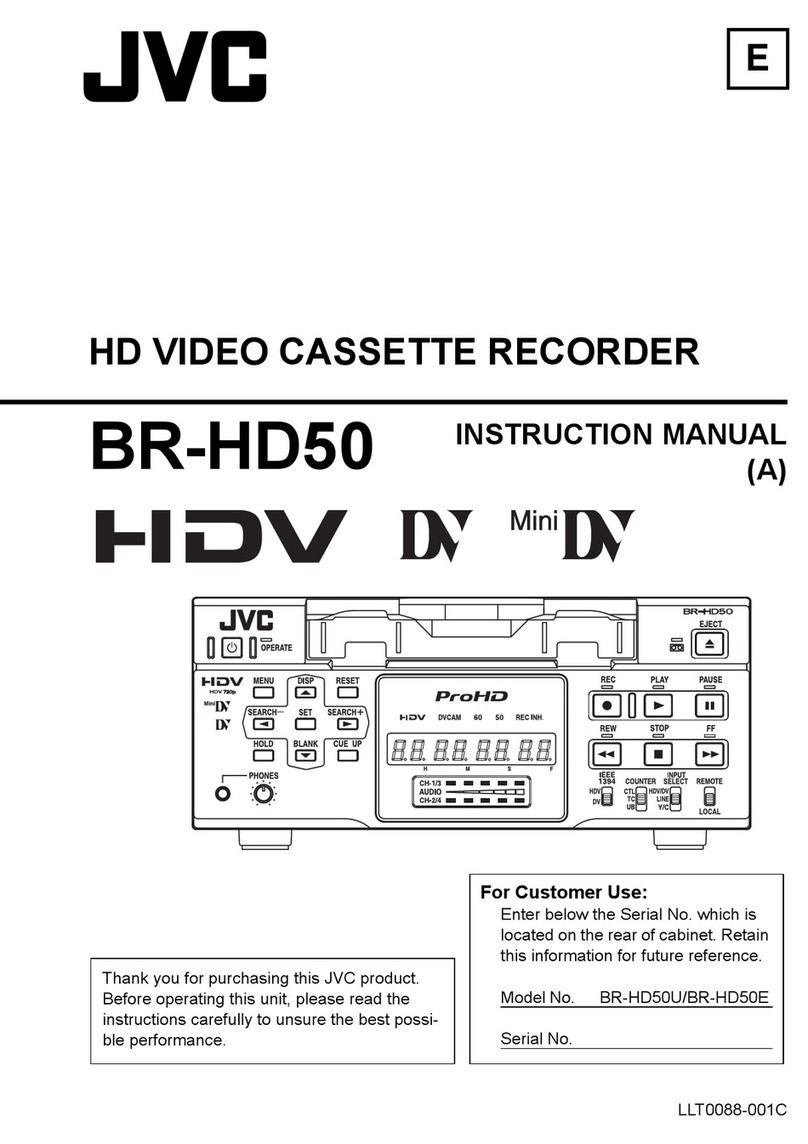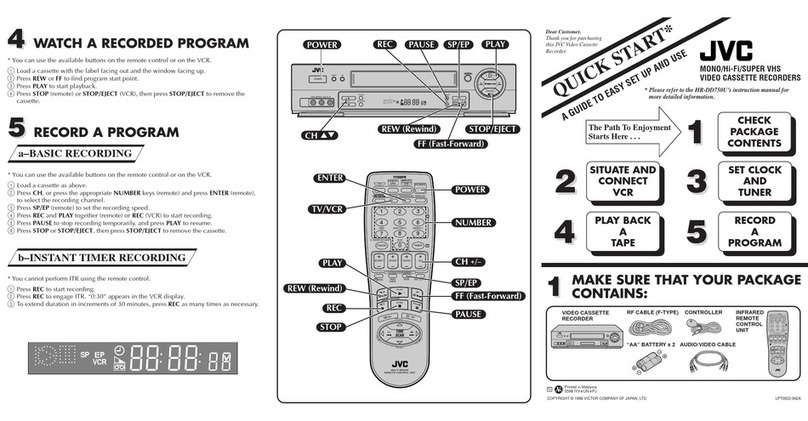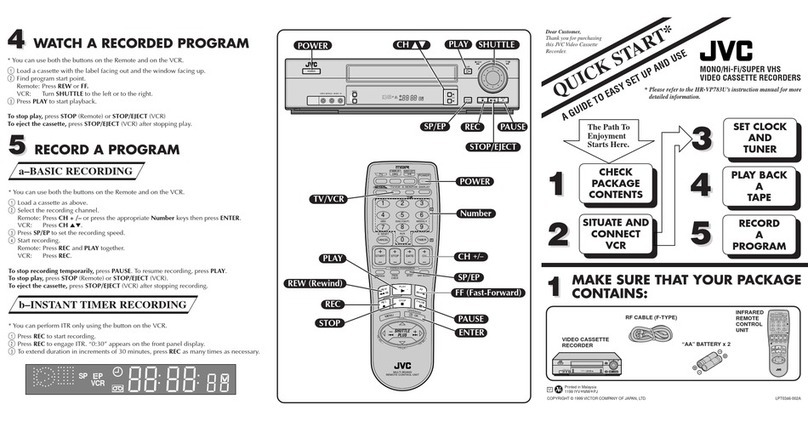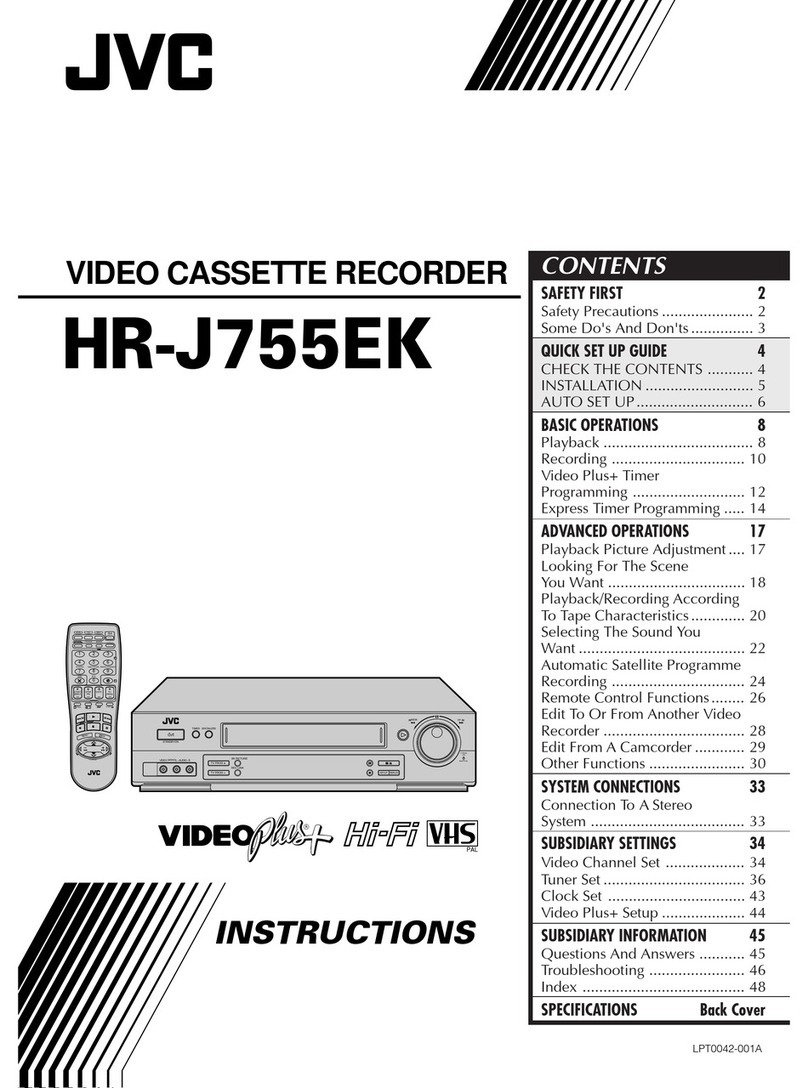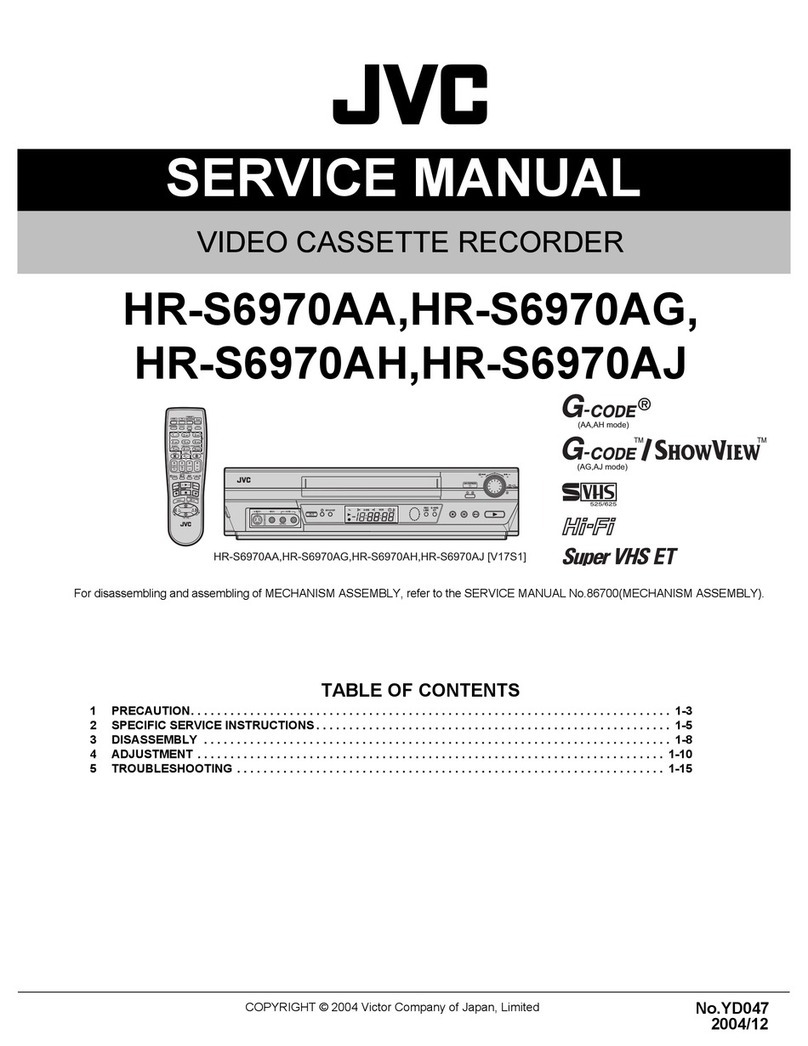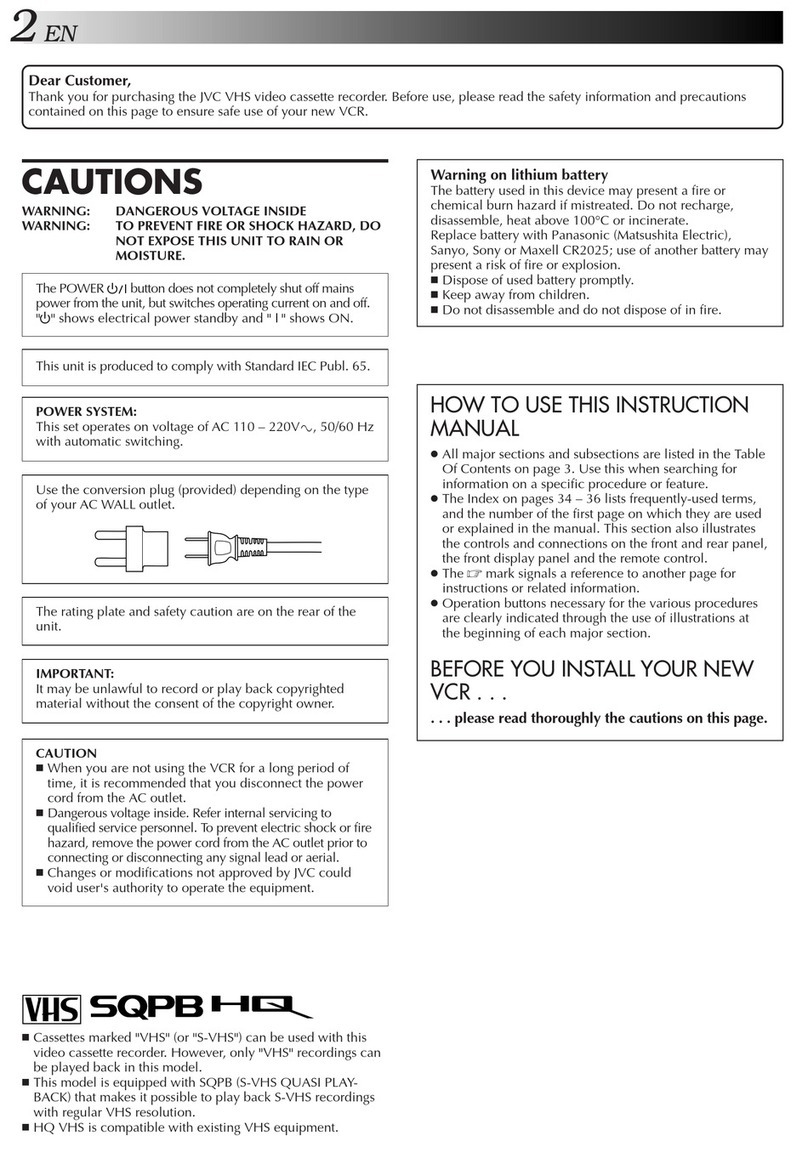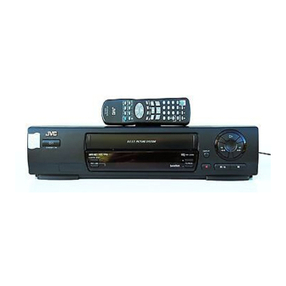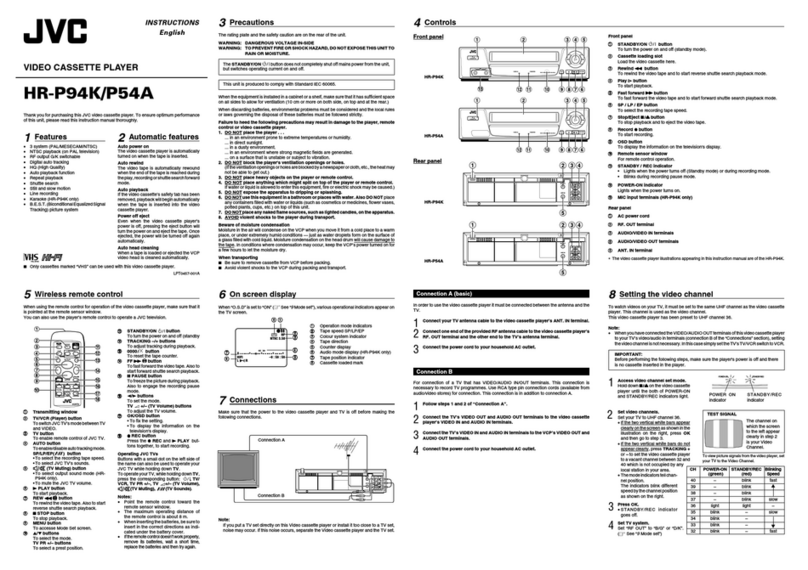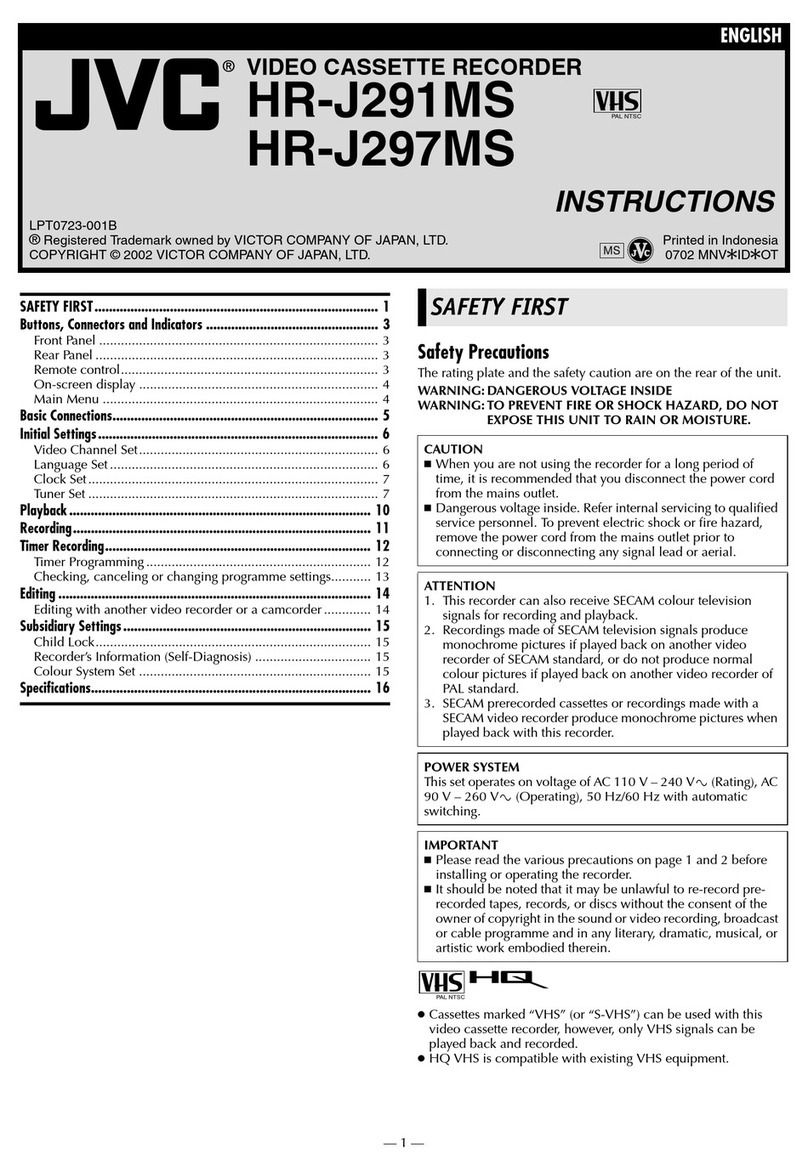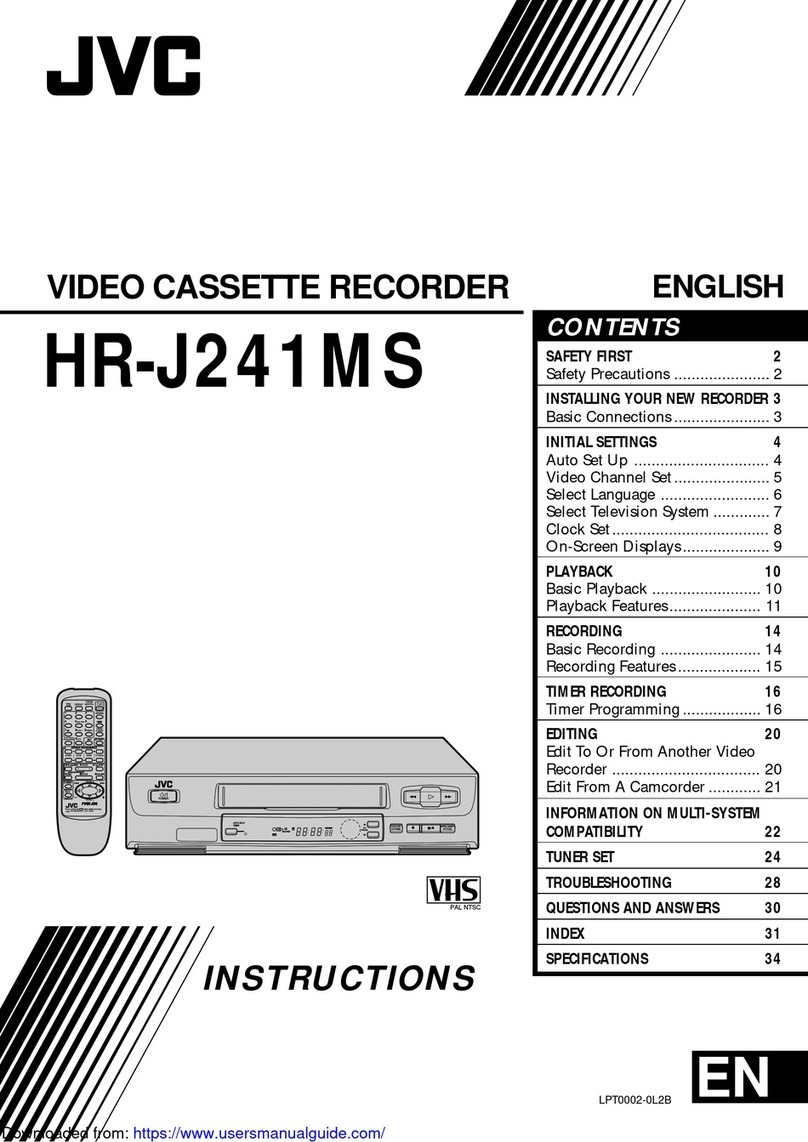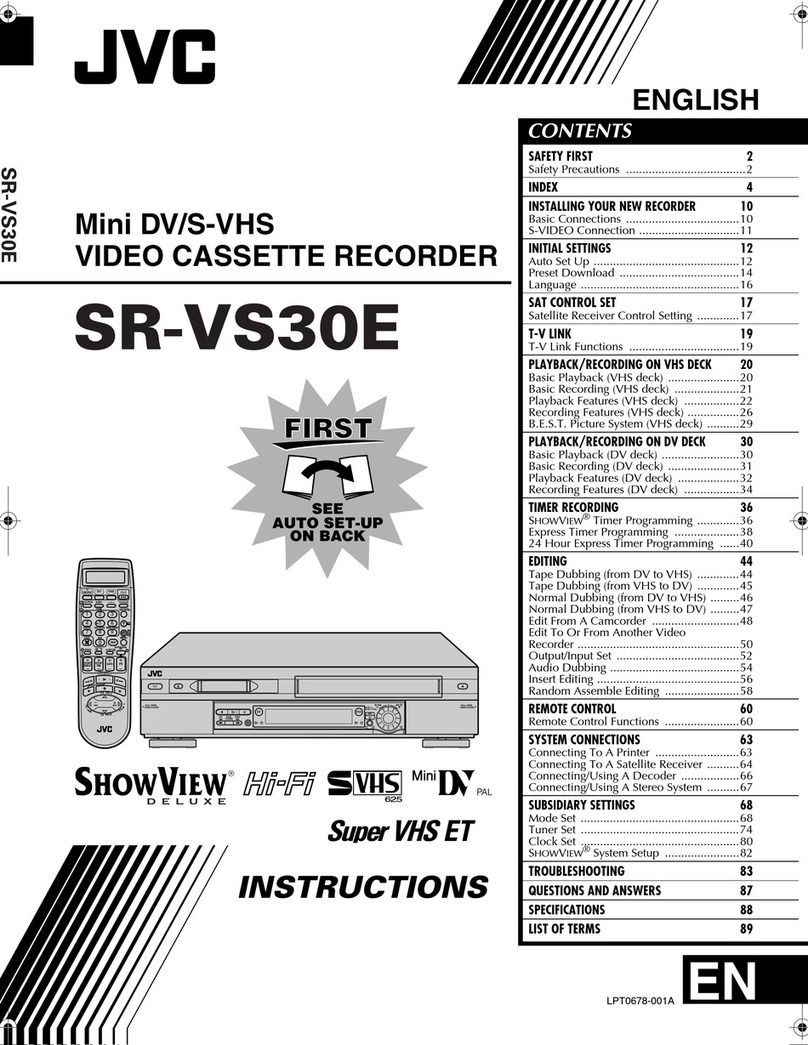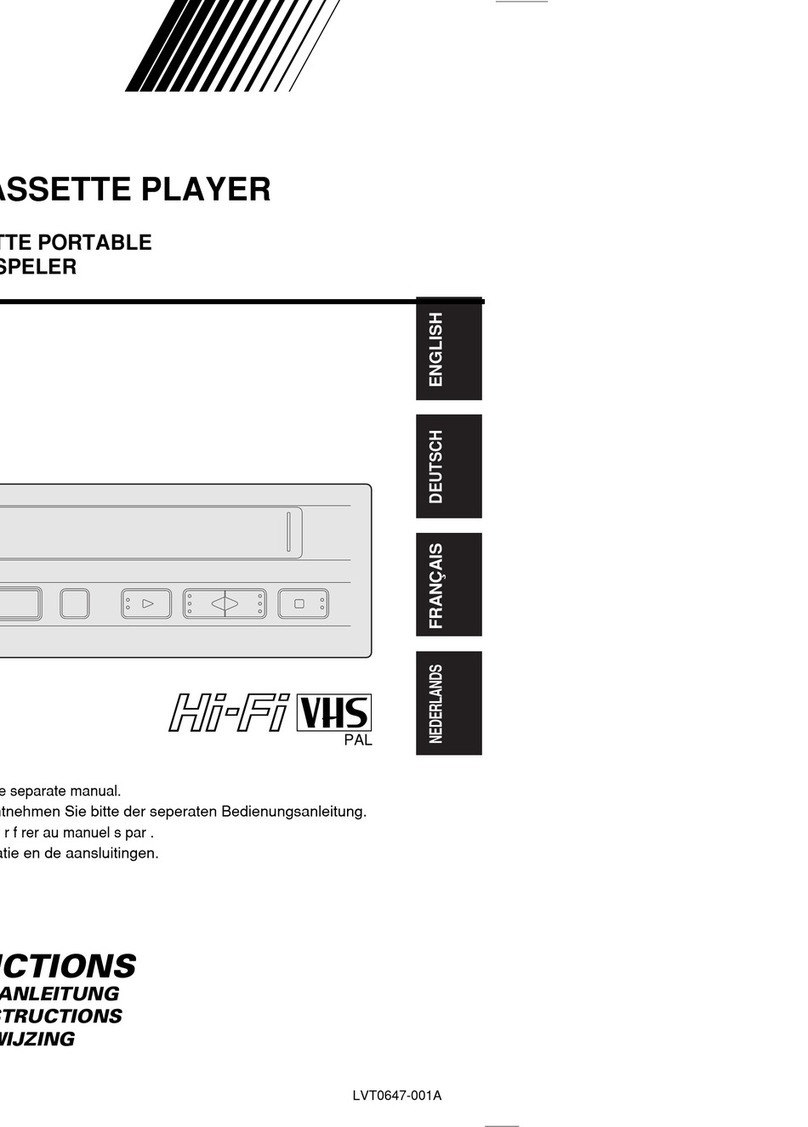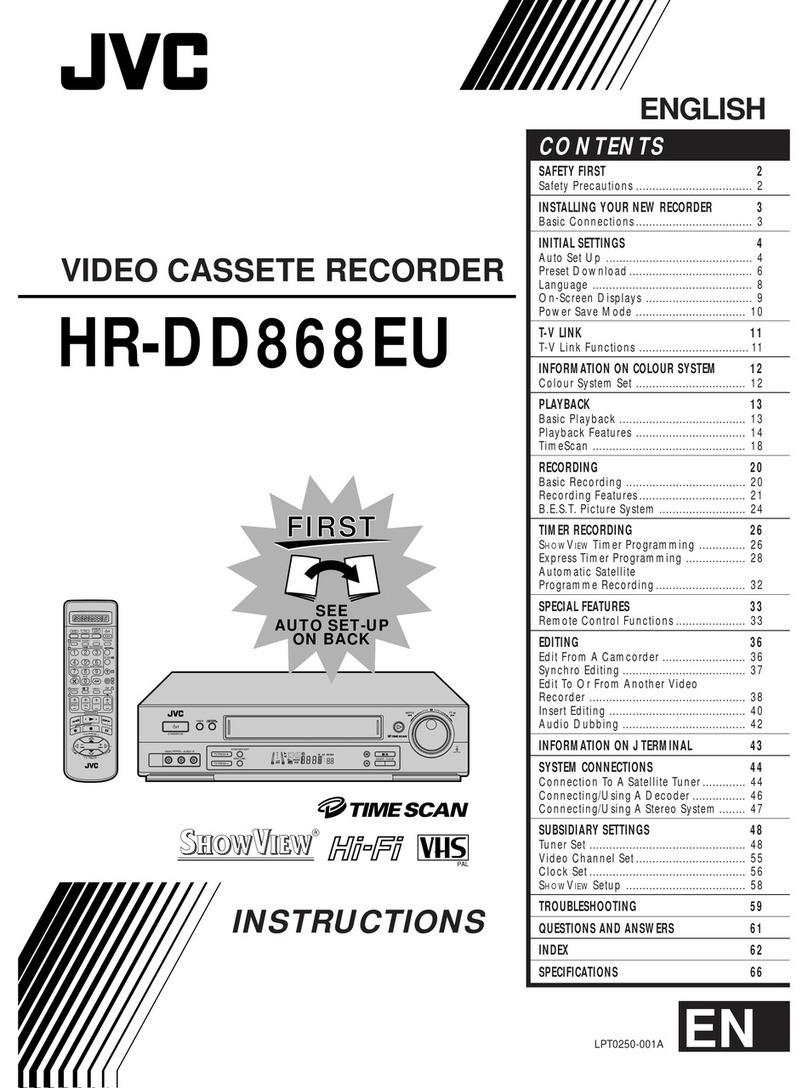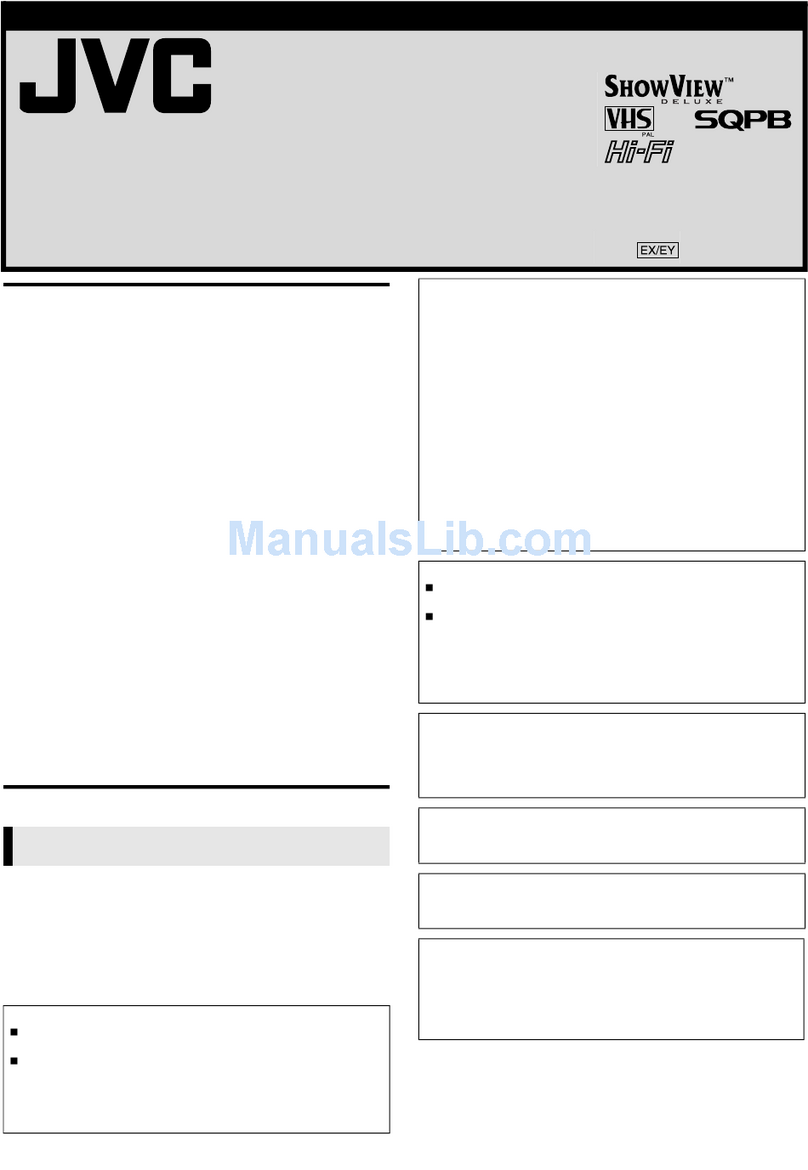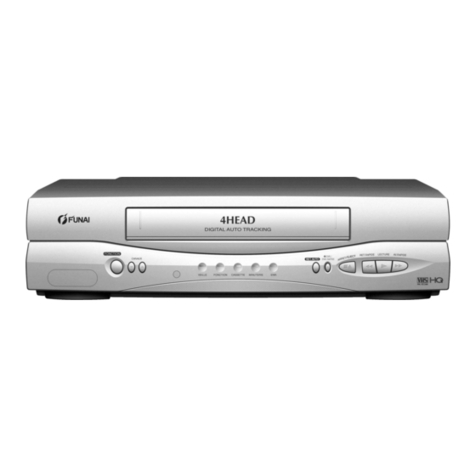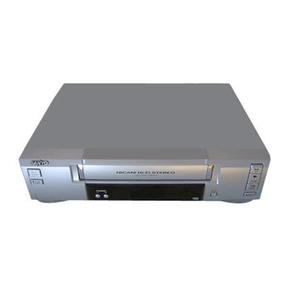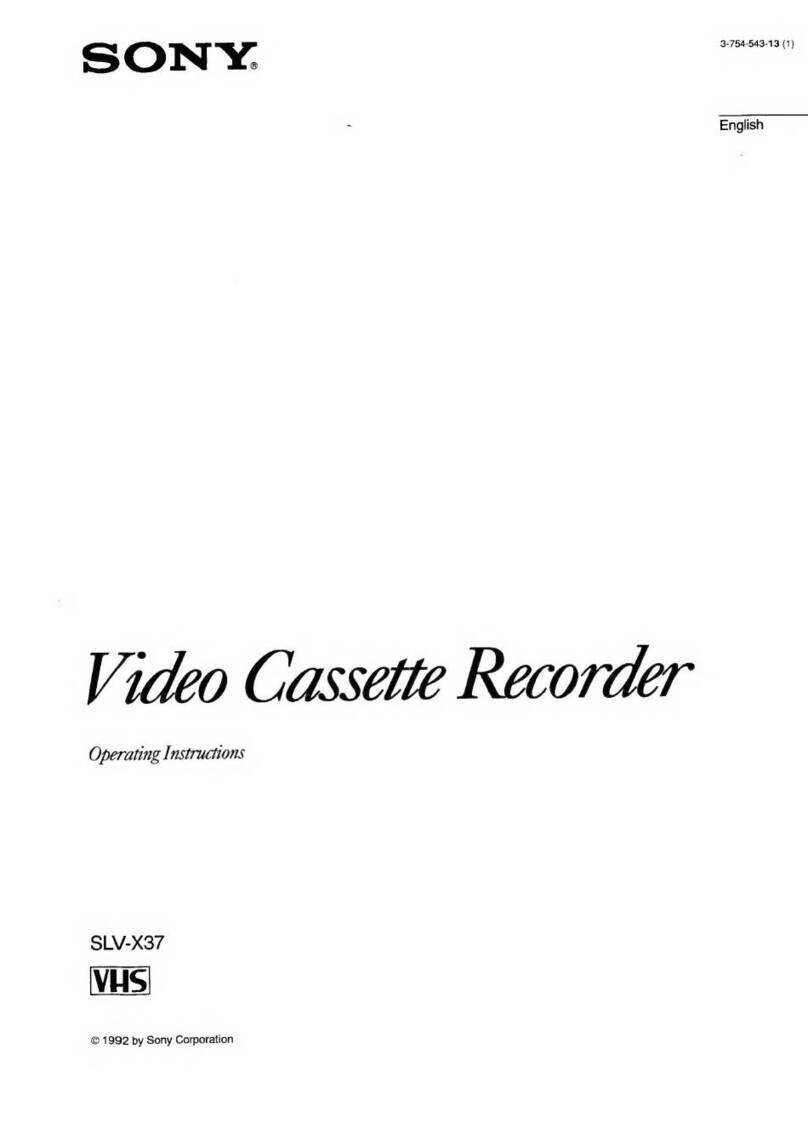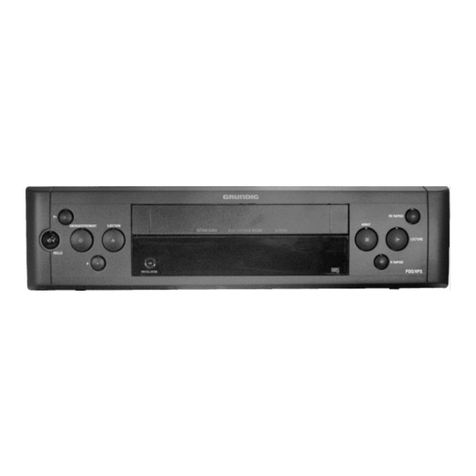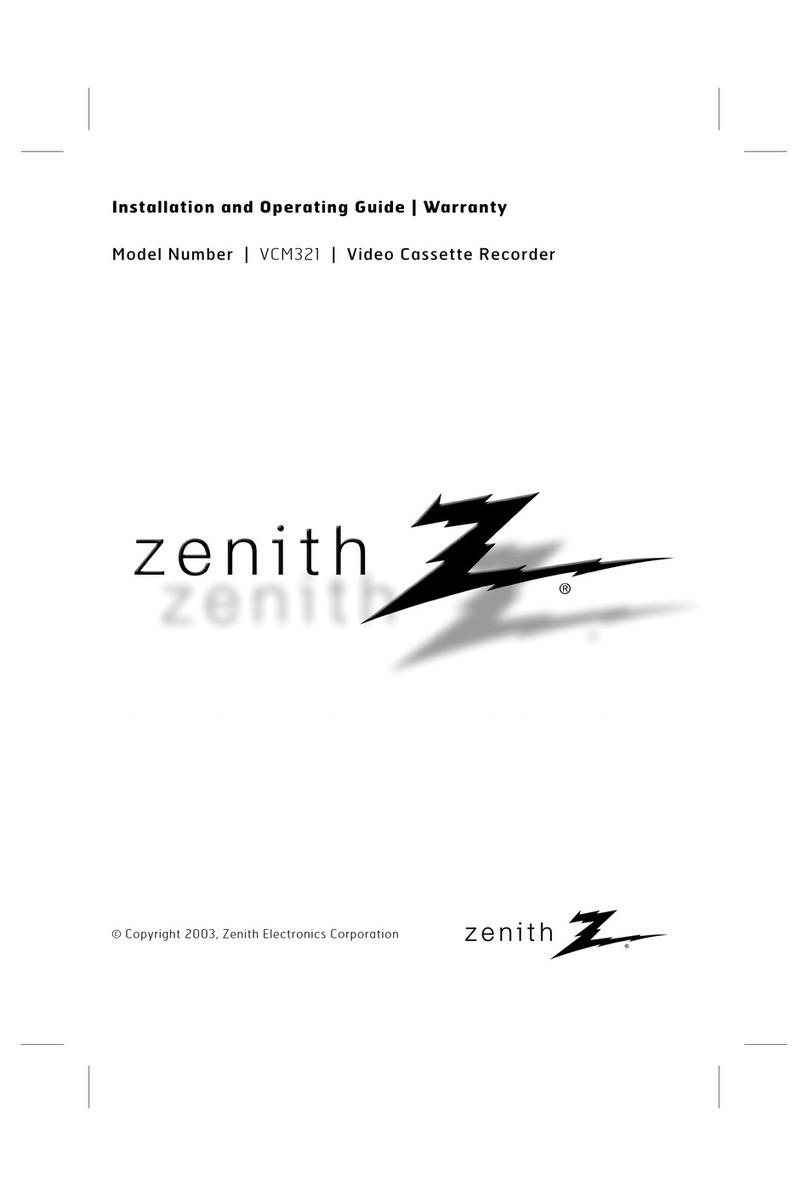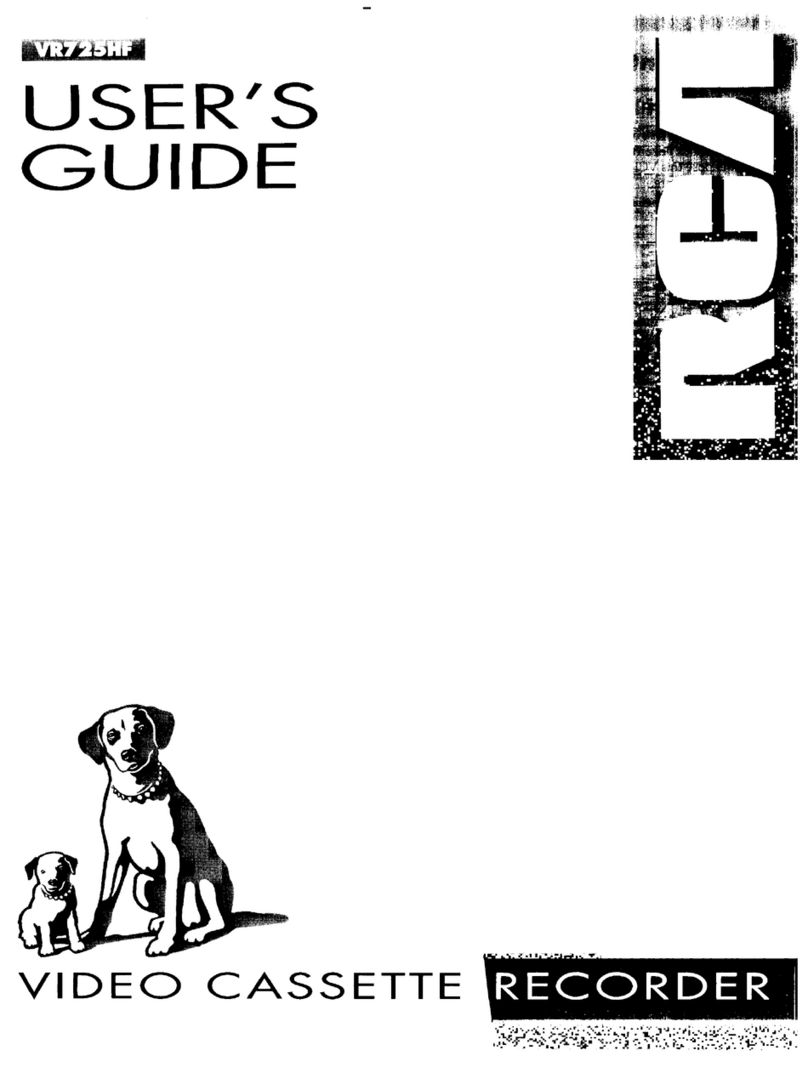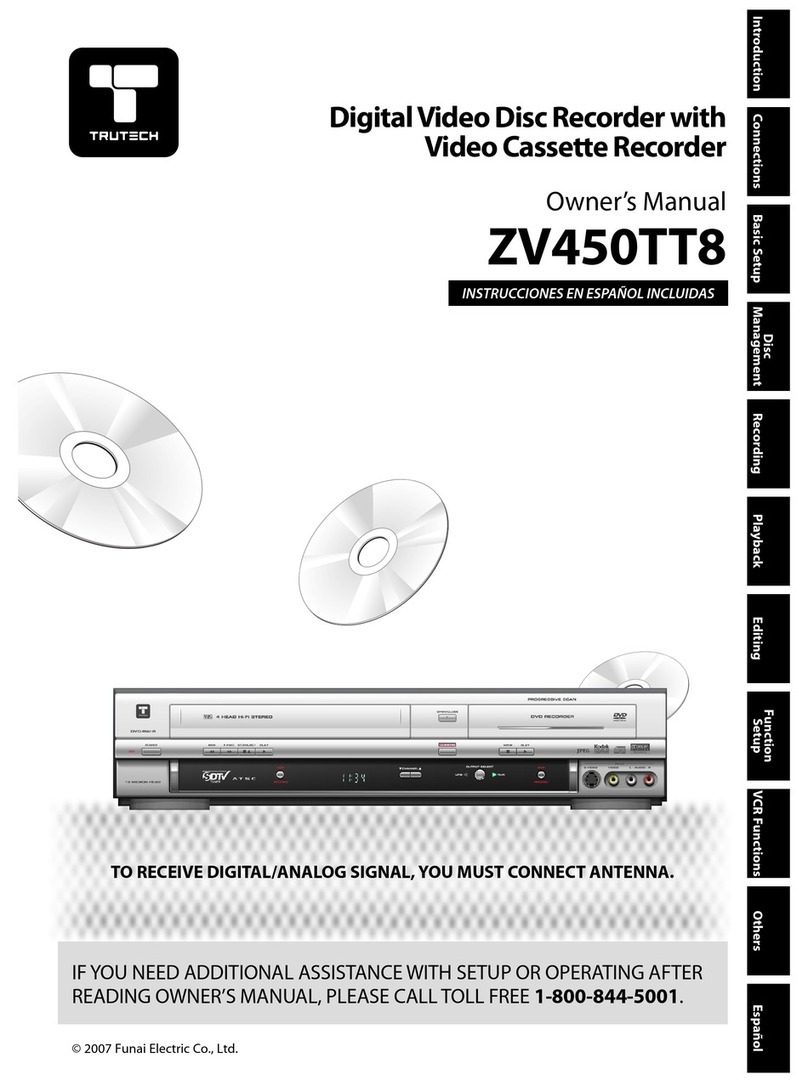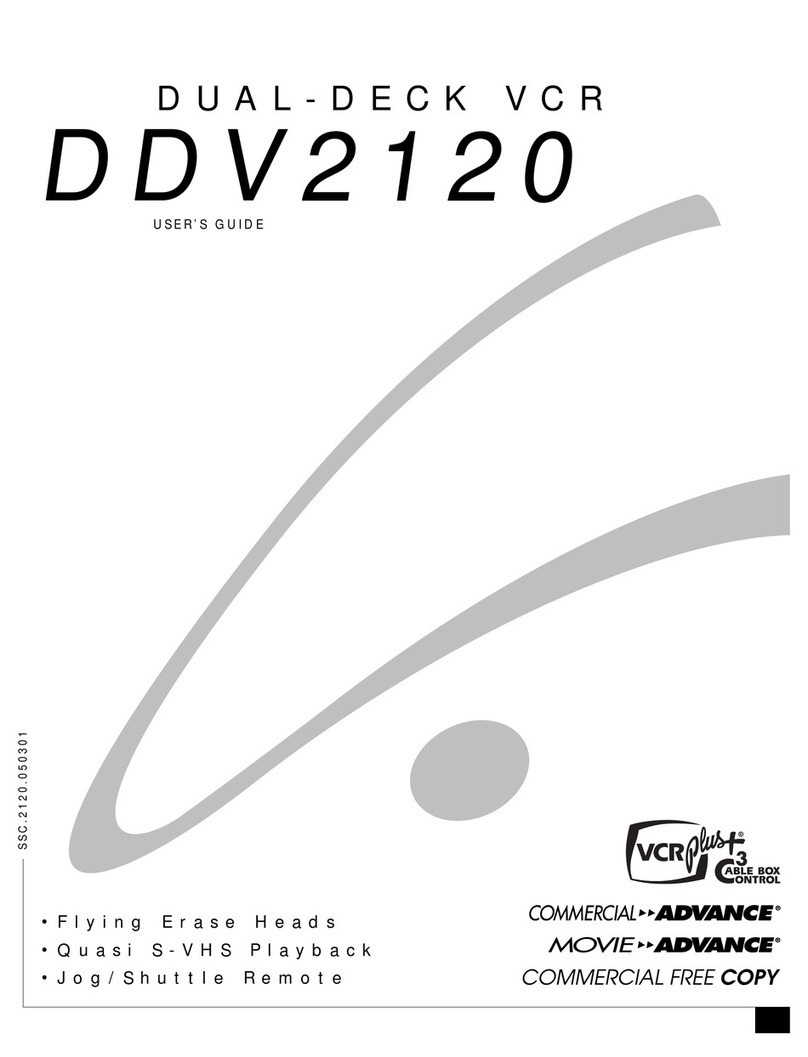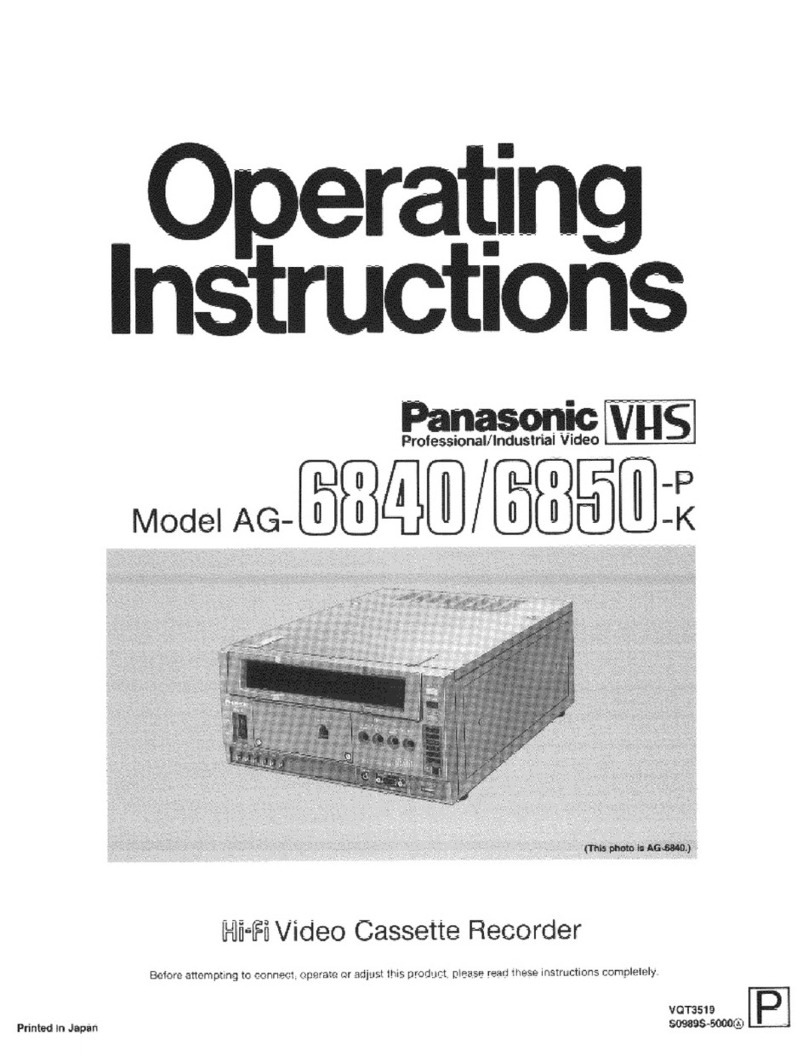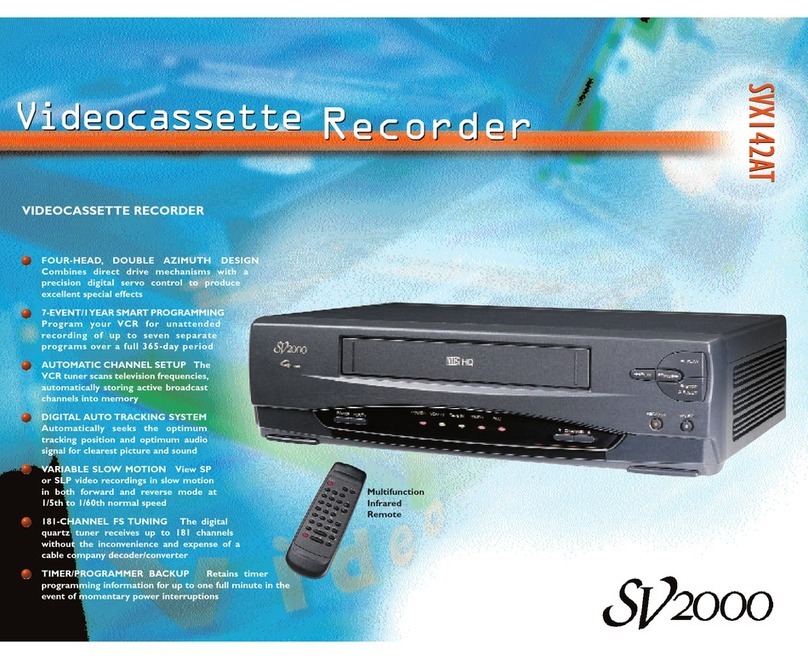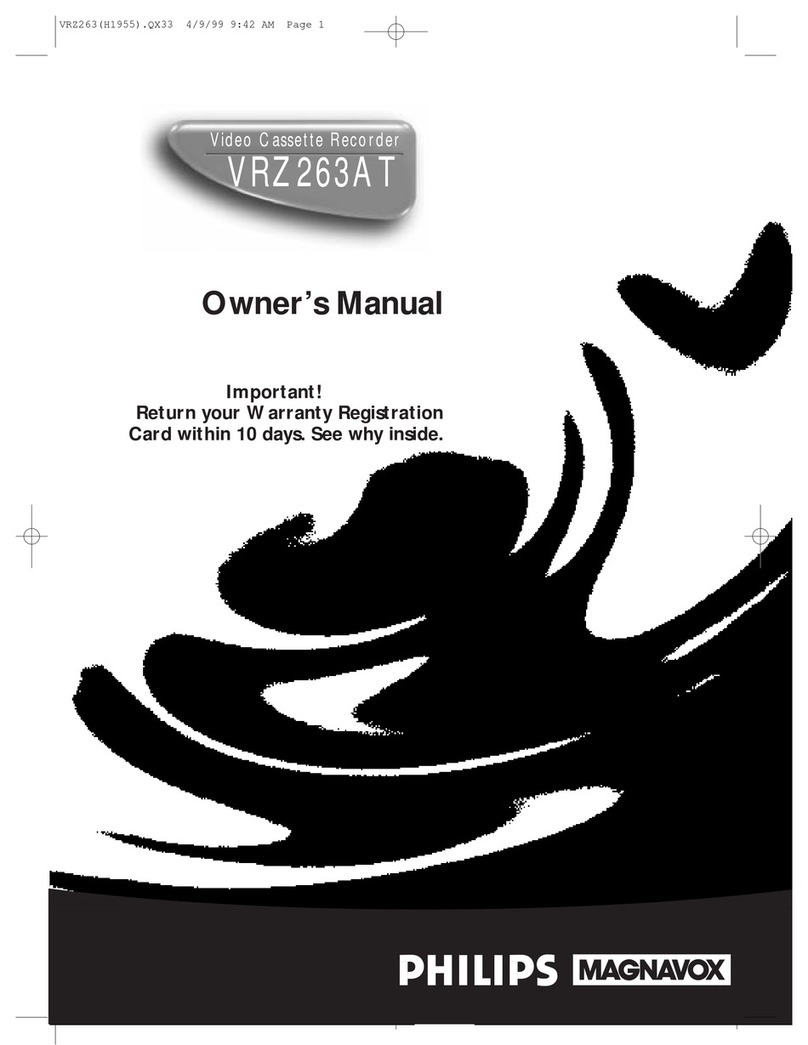
TABLE OF CONTENTS
Section Title Page Section Title Page
Important Safety Precautions
INSTRUCTIONS
DISASSEMBLY INSTRUCTIONS
1.REMOVAL OF MECHANICAL PARTS AND
P.C.BOARDS ..................................................................1-1
1-1 TOP CABINETAND FRONT CABINET ..................1-1
1-2 FLAP .......................................................................1-1
1-3 VCR DECK..............................................................1-1
1-4 VCR MT PCB ..........................................................1-1
1-5 DECK CD AND MPEG MT PCB..............................1-2
1-6 POWER PCB ..........................................................1-2
2.REMOVAL OF VCR DECK PARTS.................................1-1
2-1 TOP BRACKET .......................................................1-3
2-2 CASSETTE HOLDER ASS’Y ..................................1-3
2-3 CASSETTE SIDE L/R .............................................1-3
2-4 LINK UNIT ...............................................................1-3
2-5 LINK LEVER/FLAP LEVER.....................................1-3
2-6 LOADING MOTOR/WORM .....................................1-4
2-7 TENSION ASS’Y .....................................................1-4
2-8 T BRAKE ARM/T BRAKE BAND .............................1-5
2-9
S REEL/T REEL/IDLERARM ASS’Y/IDLER GESR ........
1-5
2-10 CASSETTE OPENER/PINCH ROLLER
BLOCK/P5 ARM ASS’Y...........................................1-6
2-11 A/C HEAD ...............................................................1-6
2-12 FE HEAD(RECORDER ONLY) ...............................1-6
2-13 AHC ASS’Y/CYLINDER UNIT ASS’Y......................1-6
2-14 CAPSTAN DD UNIT ................................................1-7
2-15
MAIN CAM/PINCH ROLLER CAM/JOINT GEAR ............
1-7
2-16
LOADING GEAR S/T UNIT..............................................
1-7
2-17
CLUTCH ASS’Y/RING SPRING/
CLUTCH LEVER/CLUTCH GEAR ...................................
1-8
2-18
CASSETTE GUIDE POST/
INCLINED BASE S/T UNIT/P4 CAP ................................
1-8
3.
REMOVALAND INSTALLATION OF FLAT PACKAGE IC .......
1-9
REMOVAL........................................................................1-9
INSTALLATION ..............................................................1-10
KEY TO ABBREVIATIONS ............................................. 1-11
SERVICE MODE LIST.....................................................1-13
WHEN REPLACING EEPROM (MEMORY) IC ...............1-14
PARENTAL CONTROL - RATING LEVEL ......................1-14
PREVENTIVE CHECKS AND SERVICE INTERVALS
CONFIRMATION OF HOURS USED..............................1-15
CLEANING......................................................................1-16
PECULUIAR SERVICE ...................................................1-17
1.DVD SECTION .............................................................1-17
DISC REMOVAL METHODAT NO POWER SUPPLY...1-17
ELECTRICALADJUSTMENT PARTS
LOCATION GUIDE (WIRING CONNECTION)...............1-18
2.VHS SECTION..............................................................1-19
SERVICING FIXTURES AND TOOLS ...........................1-19
MECHANISM ADJUSTMENT PARTS LOCATION GUIDE......
1-19
MECHANICAL ADJUSTMENTS
TAPE REMOVAL METHODAT NO POWER SUPPLY ....1-20
1.CONFIRMATION AND ADJUSTMENT .........................1-20
1-1 CONFIRMATION AND ADJUSTMENT OF
TENSION POST POSITION .................................1-20
1-2 CONFIRMATION OF PLAYBACK TORQUEAND
BACK TENSION TORQUE DURING PLAY BACK..1-20
1-3 CONFIRMATION OF VSR TORQUE ....................1-20
1-4 CONFIRMATION OF REEL BRAKE TORQUE .....1-21
2.CONFIRMATION AND ADJUSTMENT OF
TAPE RUNNING MECHANISM ....................................1-21
2-1 GUIDE ROLLER ...................................................1-21
2-2 CONFIRMATION AND ADJUSTMENT OF
AUDIO/CONTROL HEAD .....................................1-22
2-3 TAPE RUNNING ADJUSTMENT ..........................1-22
ELECTRICAL ADJUSTMENTS
1.BASIC ADJUSTMENT ..................................................1-23
1-1 SWITCHING POINT..............................................1-23
ELECTRICALADJUSTMENT PARTS LOCATION GUIDE ........
1-23
IC DESCRIPTIONS .........................................................1-24
SERVO TIMING CHART .................................................1-27
MECHANISM TIMING CHART........................................1-28
TROUBLESHOOTING GUIDE
VCR SECTION ..........................................................................
1-29
DVD SECTION ..........................................................................
1-52
INTERCONNECTION DIAGRAM ................................................
2-1
POWER SCHEMATIC DIAGRAM................................................
2-3
MPEG SCHEMATIC DIAGRAM...................................................
2-5
SDRAM SCHEMATIC DIAGRAM ................................................
2-7
DVD SYSCON SCHEMATIC DIAGRAM......................................
2-9
VIDEO ENCORDER SCHEMATIC DIAGRAM...........................
2-11
Y/C AUDIO/CCD/HEAD AMP SCHEMATIC DIAGRAM .............
2-13
VCR SYSCON SCHEMATIC DIAGRAM....................................
2-15
TUNER/JACK SCHEMATIC DIAGRAM.....................................
2-17
REGULATOR SCHEMATIC DIAGRAM .....................................
2-19
OPERATION/DISPLAY SCHEMATIC DIAGRAM.......................
2-21
Hi-Fi/DEMODULATOR SCHEMATIC DIAGRAM .......................
2-23
DVD IN/OUT SCHEMATIC DIAGRAM.......................................
2-25
OPERATION SCHEMATIC DIAGRAM ......................................
2-27
PRINTED CIRCUIT BOARDS
POWER/OPERATION ..............................................................
2-29
MPEG
..............................................................................2-30
VCR
..............................................................................2-31
WAVEFORMS ............................................................................
2-35
DVD BLOCK DIAGRAM ............................................................
2-39
Y/C/AUDIO/CCD/HEAD AMP BLOCK DIAGRAM .....................
2-41
SYSTEM CONTROL BLOCK DIAGRAM ...................................
2-43
REGULATOR BLOCK DIAGRAM ..............................................
2-45
OPERATION/DISPLAY BLOCK DIAGRAM ...............................
2-47
HIFI/DEMODULATOR BLOCK DIAGRAM.................................
2-49
TUNER/JACK BLOCK DIAGRAM .............................................
2-51
DVD IN/OUT BLOCK DIAGRAM ...............................................
2-53
POWR BLOCK DIAGRAM .........................................................
2-55
PARTS LIST
3.1 PACKING AND ACCESSORY ASSEMBLY <M1> ..... 3-1
3.2 FINALASSEMBLY <M2>...........................................3-2
3.3 MECHANISM ASSEMBLY <M4>............................... 3-3
3.4 ELECTRICAL PARTS LIST .......................................3-7
VCR MT PCB ASSEMBLY <03> ...............................3-7
MPEG MT PCB ASSEMBLY <50> .......................... 3-11
POWER PCB ASSEMBLY <01>..............................3-13
OPERATION PCB ASSEMBLY <28> ......................3-14
Reference..........................................................................4-1
HR-XVC1U HR-XVC1U(C)
INSTRUCTION LANGUAGE ENGLISH ENGLISH, FRENCH
REGISTRATION CARD USED NOT USED
GUARANTEE CARD NOT USED USED
SERVICE STAION LIST NOT USED USED
The following table lists the differing points between Models (HR-XVC1U and HR-XVC1U(C)) in this series.
MODEL
ITEM
